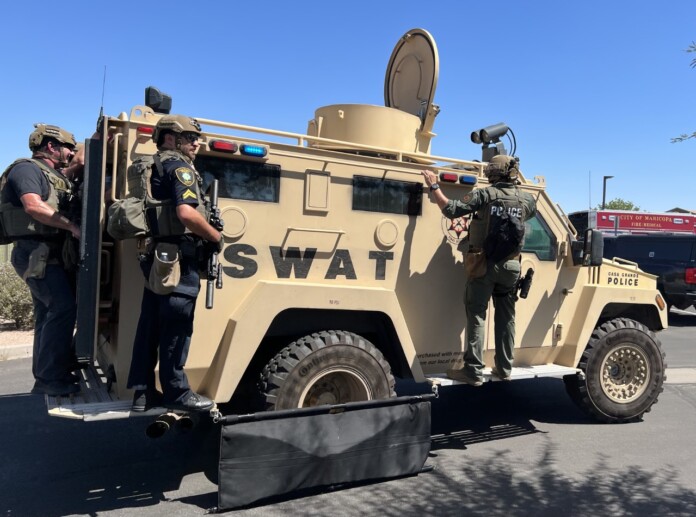
The two Maricopa Police officers involved in the fatal shooting of Brian Simmons during a call on a noise complaint at Simmons’ home in the Villages at Rancho El Dorado on Aug. 29 were interviewed by a Pinal County Sheriff’s sergeant, according to reports obtained through a public-records request by InMaricopa.
PCSO took over the investigation because Maricopa officers were involved in the shots fired at Simmons.
Sergeant Heath Rankin of the Sheriff’s Office conducted the interviews on Aug. 29 and Aug. 30, according to the records.
Simmons was experiencing a mental-health crisis, likely due to his exposure to weapons-grade plutonium and americium while he was employed at the Idaho National Laboratory in Idaho Falls. Simmons sued INL and received an undisclosed settlement.
____________________
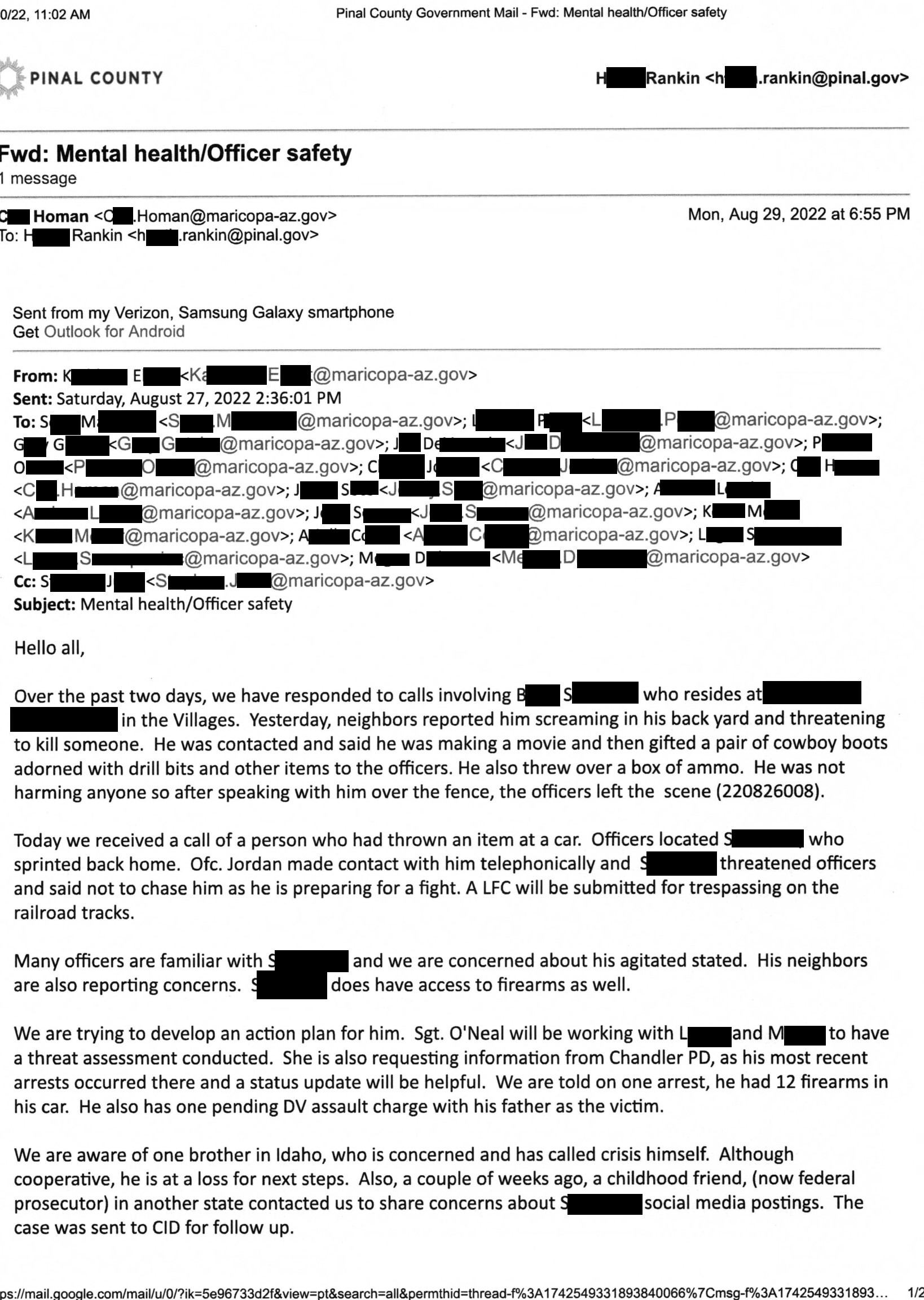
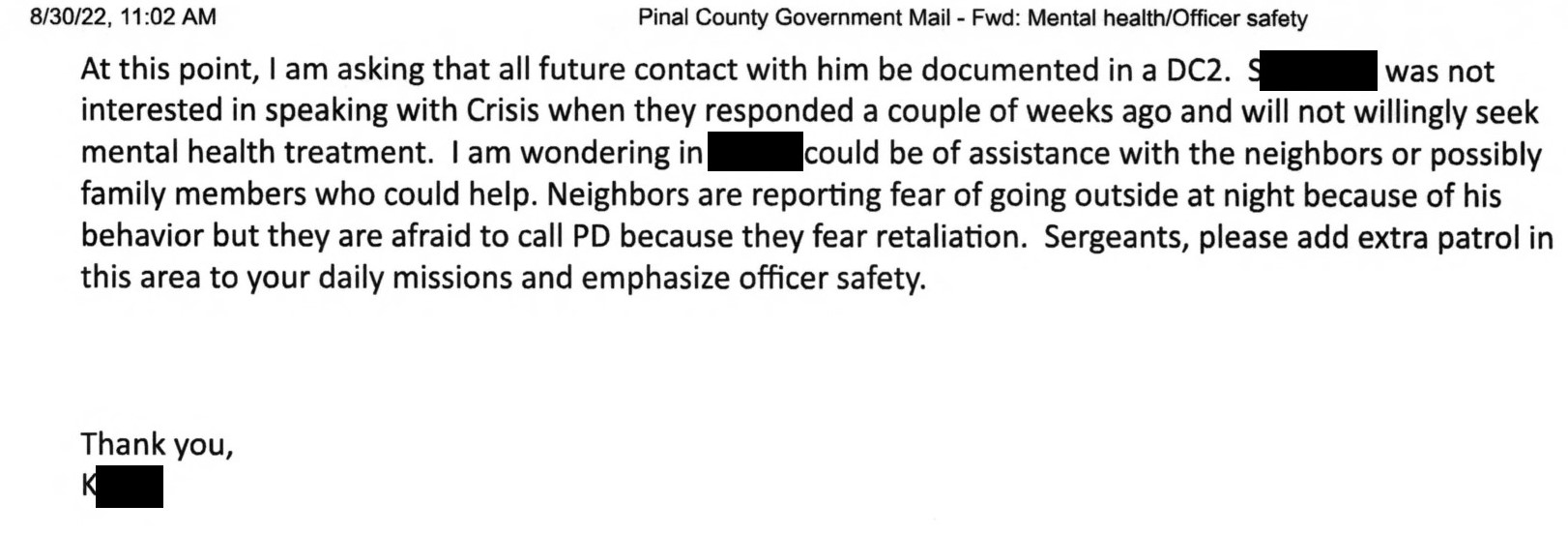
____________________
The radiation exposure is blamed for a personality shift that was evident after he moved to Maricopa. Simmons, regarded as an All-American boy during his youth in Idaho and who went on a mission for the Church of Jesus Christ of Latter-day Saints, had 20 interactions with the Maricopa Police during the final eight months of his life, leading up to the day of his death.
The officers were interviewed with legal counsel present.
Both had prior experience with Simmons.
One holds the rank of sergeant, the other a patrol officer.
The sergeant, who has been with the Maricopa Police Department since 2008, said he took the call because he believed he had a good rapport with Simmons after previous interactions, and due to Simmons’ classification as a possible risk to officer safety. The latter required involvement, at least on some level, by a sergeant.
The officer had one interaction with Simmons, a week before.
“There was knowledge that he has a substantial amount of firearms,” the officer said. “In my dealings with him, he never had them on his person.”
When MPD officers arrived at Simmons’ home on that fateful August morning, they found his belongings strewn across his driveway and yard. There was loud music playing. What appeared to be a positive interaction at first – Simmons walked out into the street, where officers greeted him by name and Simmons shook hands with them and hugged one of them – turned south abruptly when the officers told Simmons to clean up his yard and turn down the music.
As described in the interviews and seen on officers’ body-worn video footage, also obtained by InMaricopa, Simmons abruptly walked back to his driveway and picked up two handguns.
The officer said that while the visit started calmly, the intensity quickly ratcheted up.
“He kept walking around,” the officer said. “Every time we told him (to get on the ground) he would flip us off and say, ‘F— you guys. You guys are in my house now.’ He still had his music blasting. He was hyping himself up the entire time.”
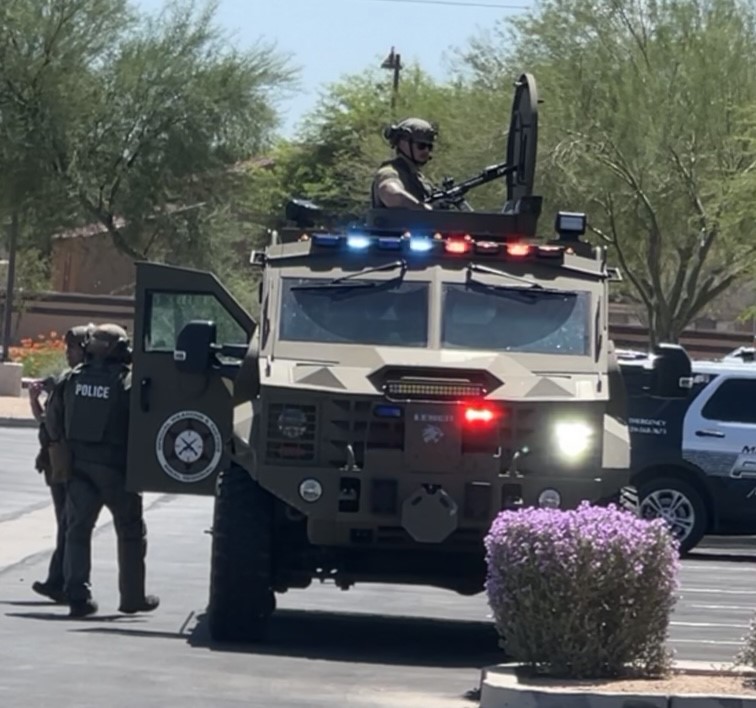
The sergeant looked at Simmons’ weapons and wondered if they were real.
“I think I was in my rights to have shot him right there,” the sergeant said. “But something in my head made me think, ‘What if this is not a real gun?’ So, I told him that if he points it at me, I’m going to shoot him. And he just smiles and puts his gun down.”
The sergeant said Simmons then picked up a hatchet, which he estimated at the time to be a foot-and-a-half to two feet in length. The report from the investigation did not specify how big the hatchet was.
“I was more scared of the ax than the handguns,” the sergeant said. “Because at the time, I’m thinking, if he throws the ax, it’s going to hit me. Because at that time, I’m in the center of the roadway. I had no cover or anything.”
The sergeant then made the decision to use less-lethal-force rounds.
“We all had our handguns pointed at him. I wasn’t ready to fire until it came to that situation,” the sergeant said.
Police ordered Simmons to put down the hatchet and get on the ground. Instead, he walked back into his house, while being hit by rounds of less-lethal force, which were bean bags, from the officers.
The sergeant hoped the pain from the less-lethal rounds would force Simmons to comply.
After the first round hit, the sergeant said Simmons just flinched.
“So, I said, ‘Hit him again,’” the sergeant said. “After he was hit, he said, ‘You really want to shoot me?’ and he walked back into the residence.”
The sergeant said the rounds of less force didn’t seem to faze Simmons.
The sergeant then told the patrol officer to go get his rifle. The sergeant also got a rifle. At that point, the police are focusing on the door from the garage to the house, where Simmons entered the home, according to the report.
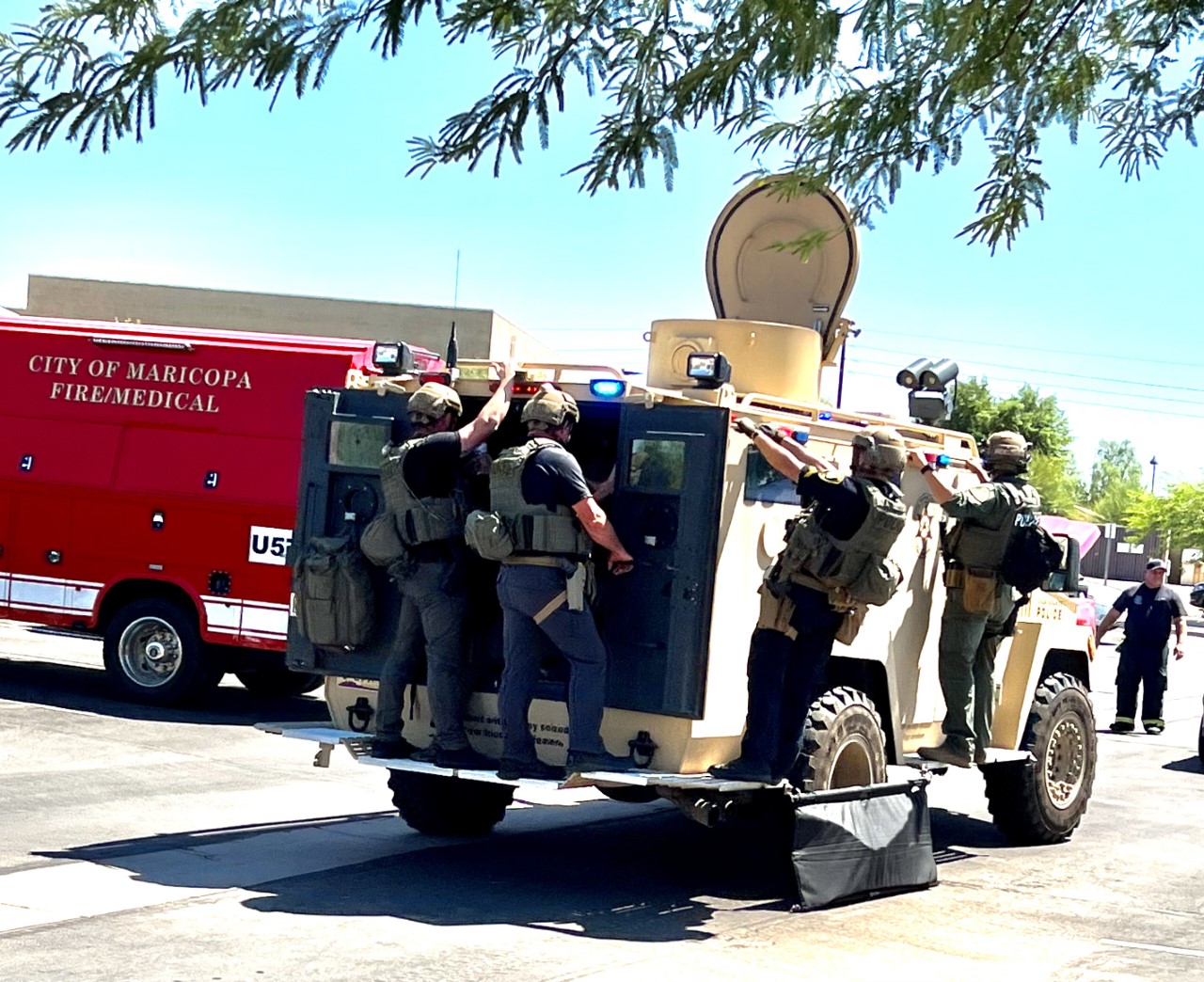
“I’m thinking that’s where he’s going to come out. I didn’t know whether he was going to come out with a weapon, or give up,” the sergeant said. “I’m looking at the garage door and he got out to the side of the house, to the gate, and honestly, I wasn’t looking at the side gate.”
The officers were startled by a shotgun blast from the side yard. Both said they saw action that appeared to be someone reloading a shotgun behind the gate and returned fire. The report shows that the sergeant fired 19 rounds and the patrol officer shot four rounds.
Six of them connected with Simmons, killing him.
“I can’t really express how I felt,” said the sergeant, regarding his feelings about being fired upon by Simmons. “I didn’t have any fear. I just knew that at that time and point I had to return fire. This is what I had to do. It just automatically clicked in.”
When asked what Simmons could have done to have ended the conflict, the sergeant said it came down to compliance.
“If Brian, with all the stuff scattered – even with the two guns that I didn’t see in front of that chair – if he had just went and taken that music off from the beginning, I would have told him, ‘OK, Brian, we are leaving.’”

![Affordable apartments planned near ‘Restaurant Row’ A blue square highlights the area of the proposed affordable housing development and "Restaurant Row" sitting south of city hall and the Maricopa Police Department. Preliminary architectural drawings were not yet available. [City of Maricopa]](https://www.inmaricopa.com/wp-content/uploads/2024/04/041724-affordable-housing-project-restaurant-row-218x150.jpg)


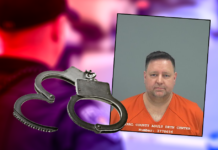
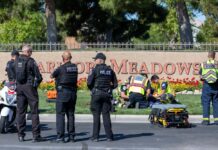








![Affordable apartments planned near ‘Restaurant Row’ A blue square highlights the area of the proposed affordable housing development and "Restaurant Row" sitting south of city hall and the Maricopa Police Department. Preliminary architectural drawings were not yet available. [City of Maricopa]](https://www.inmaricopa.com/wp-content/uploads/2024/04/041724-affordable-housing-project-restaurant-row-100x70.jpg)


